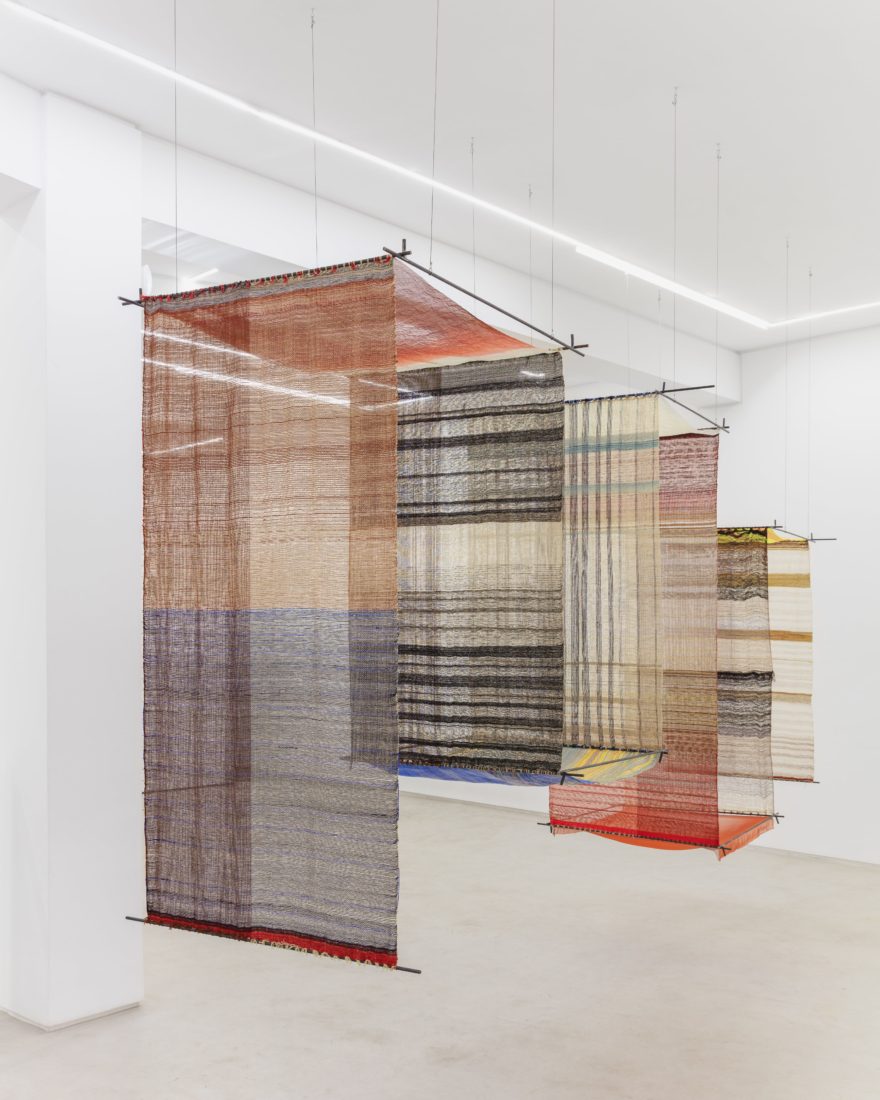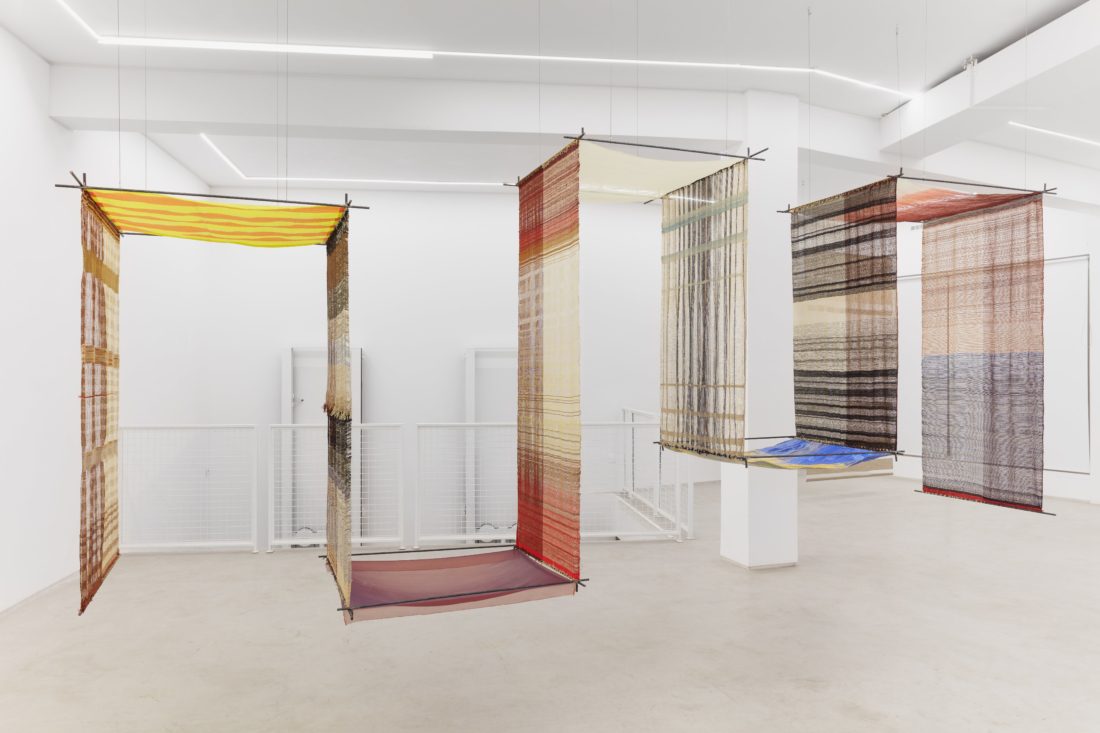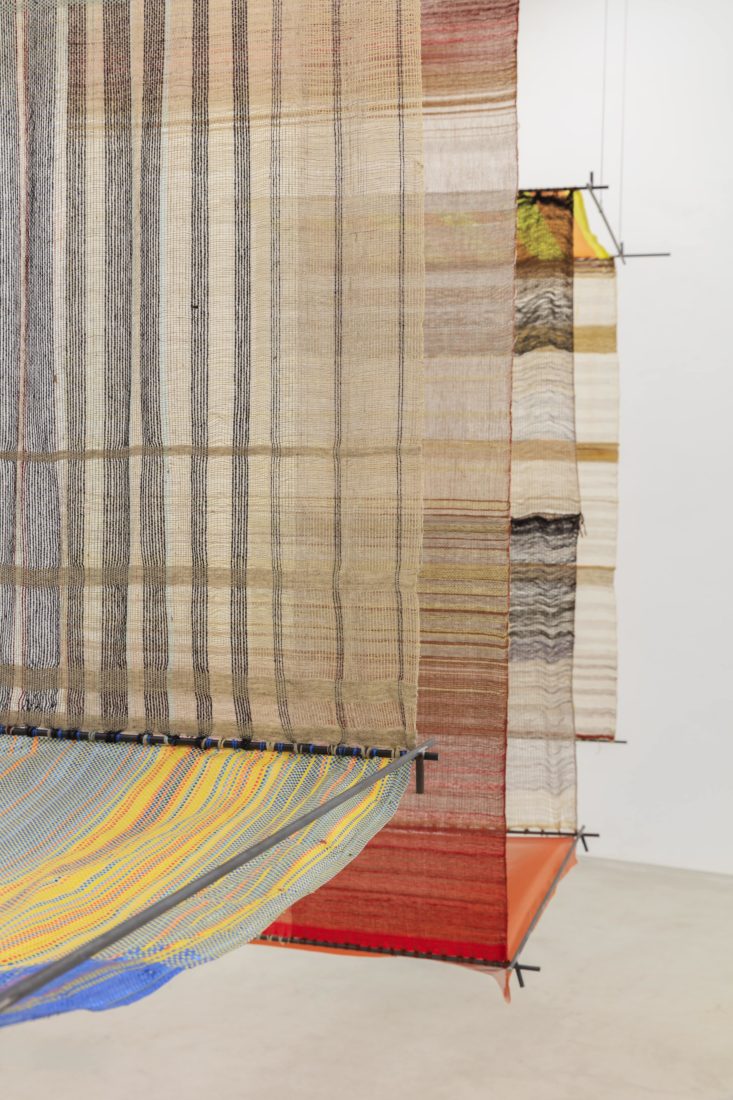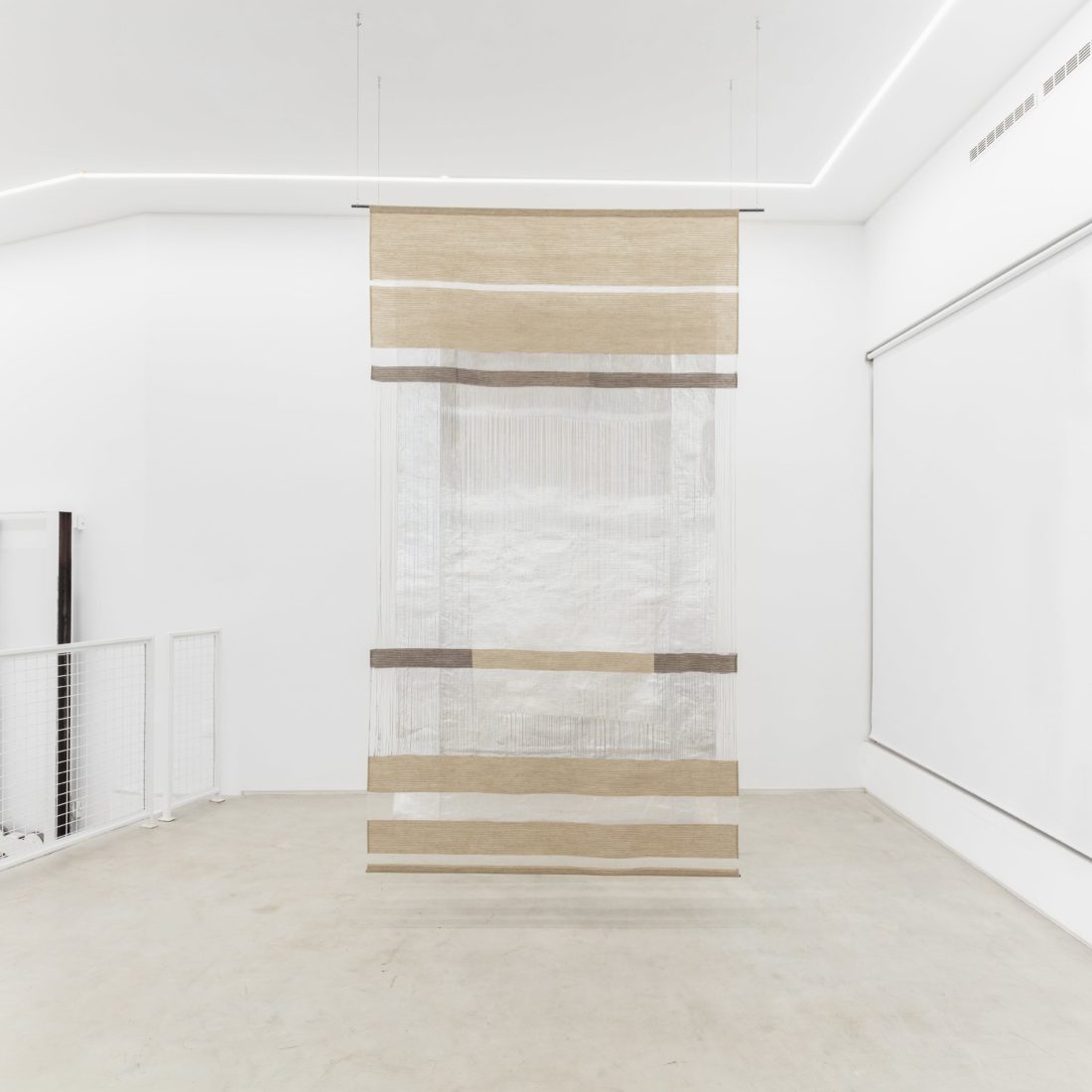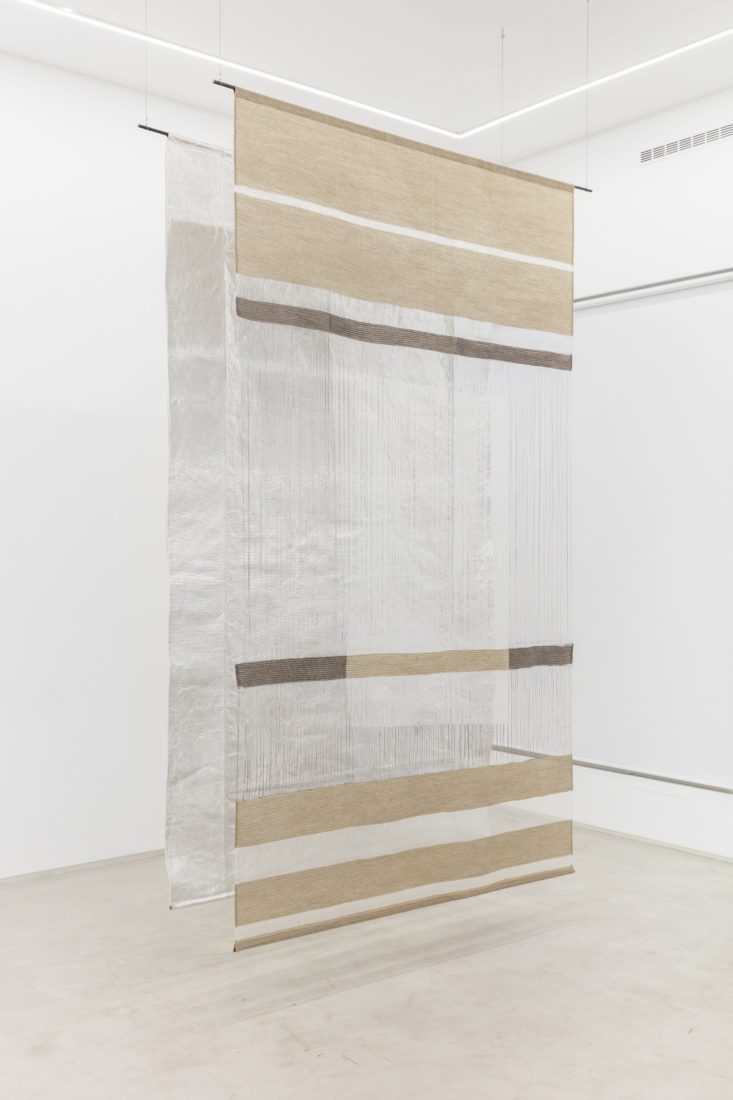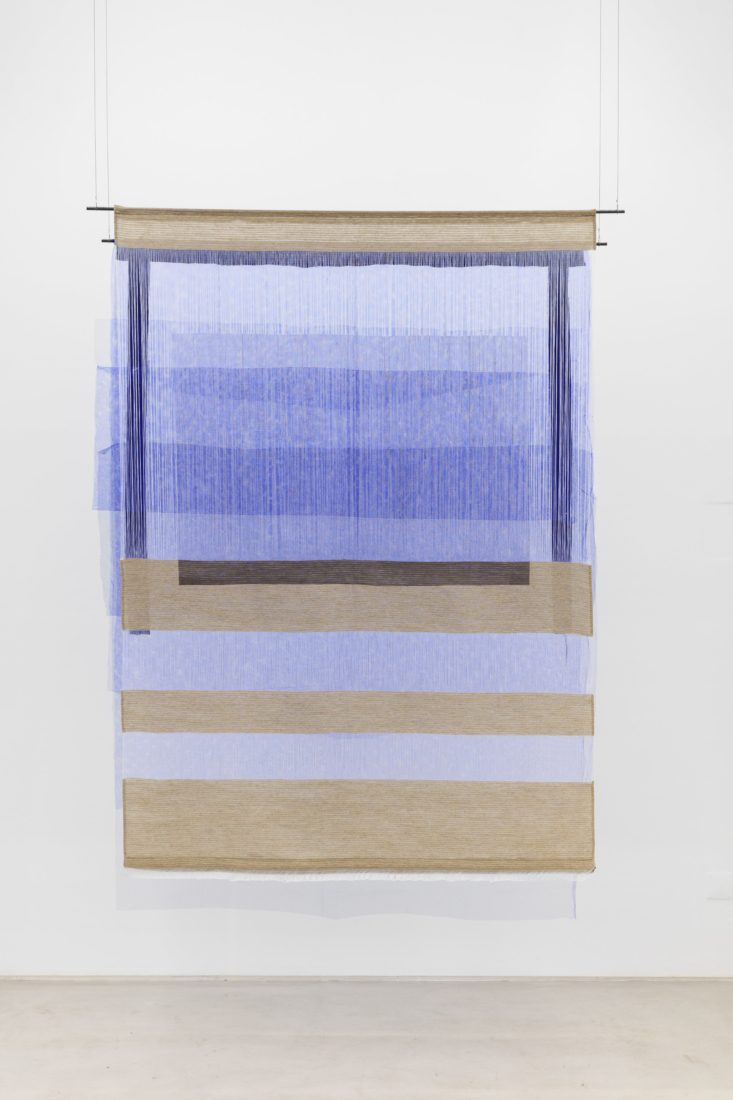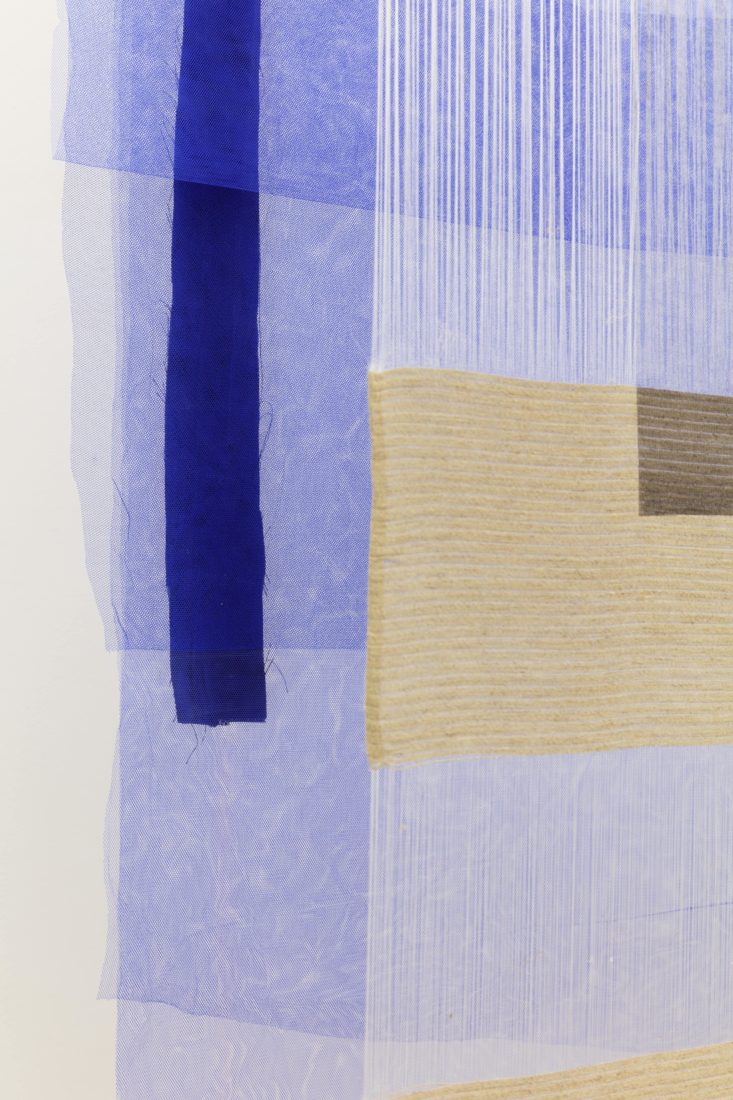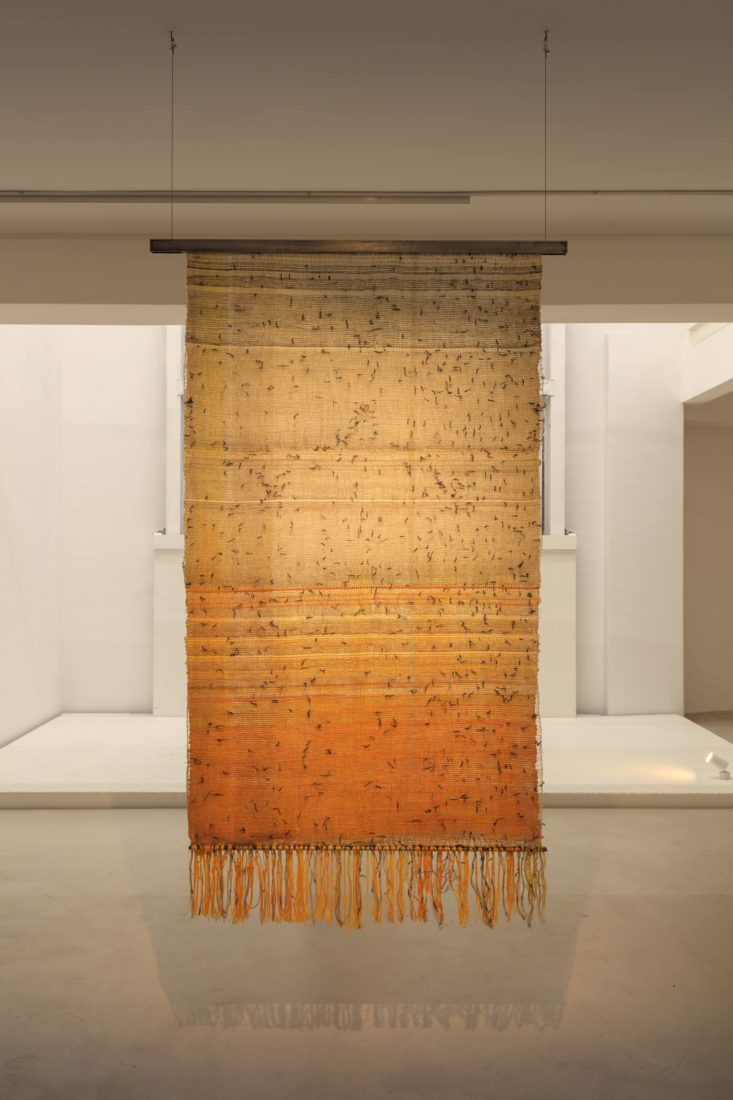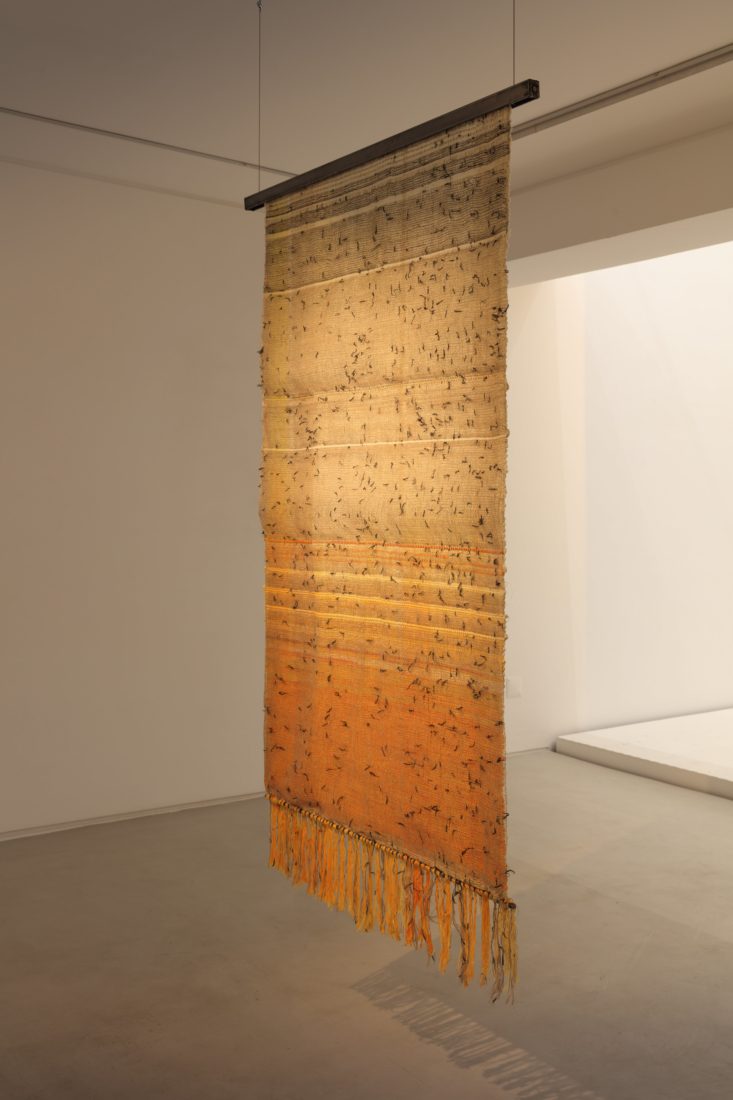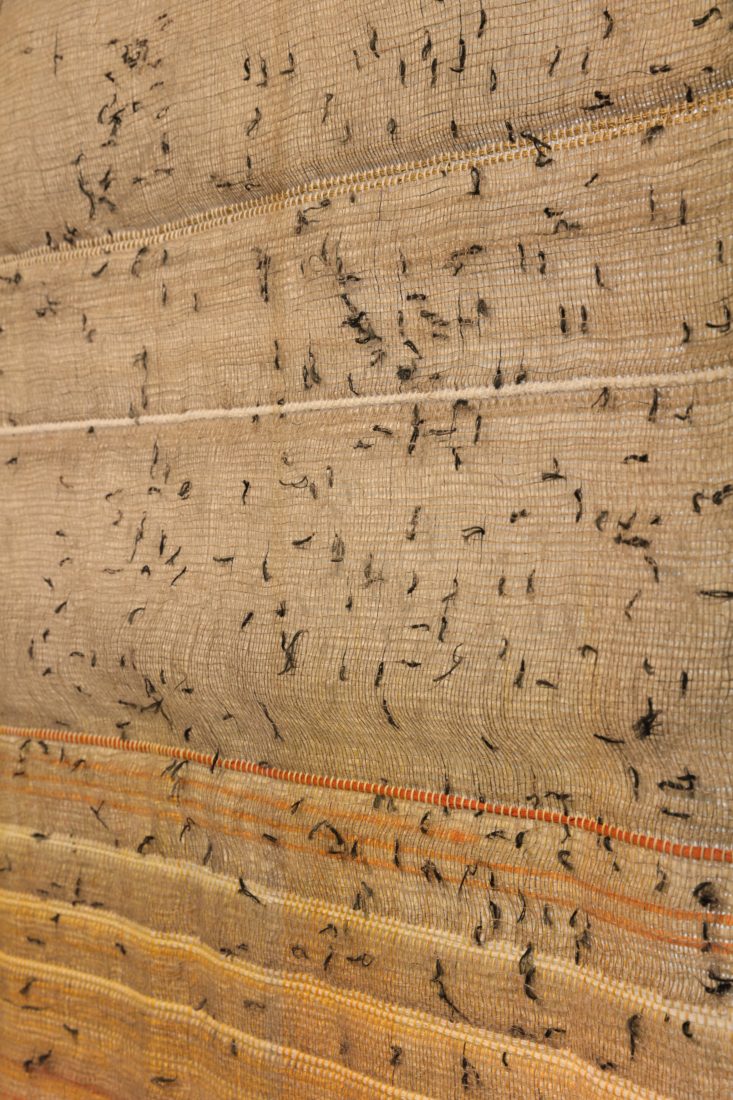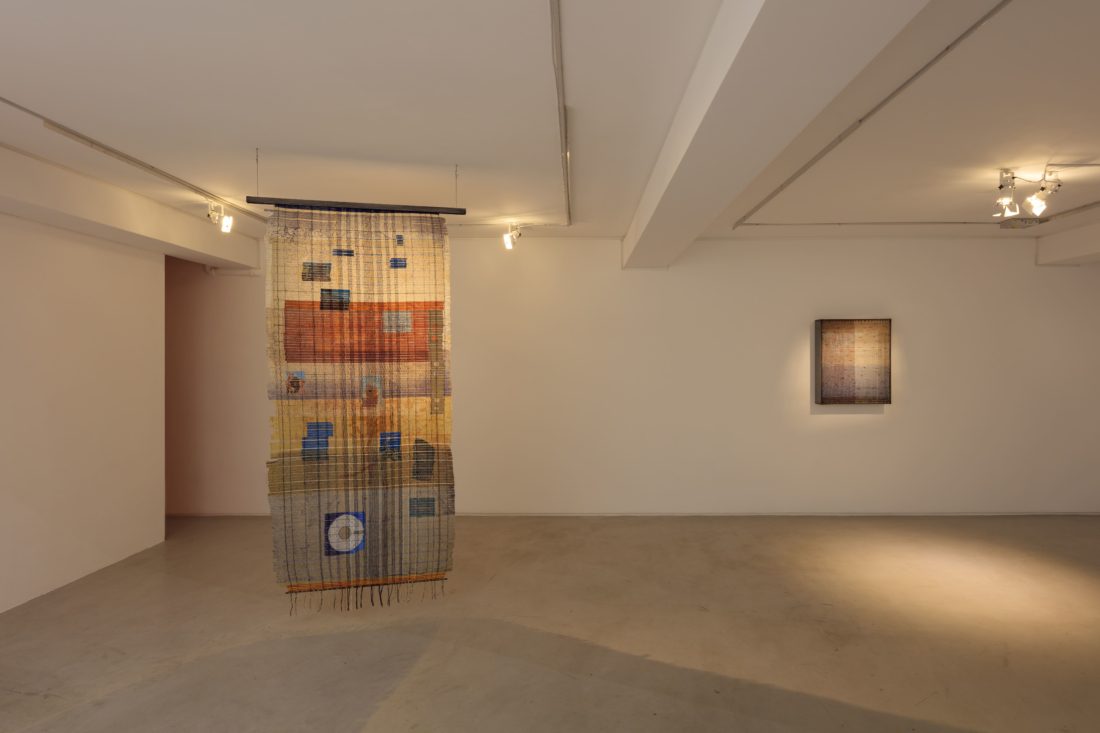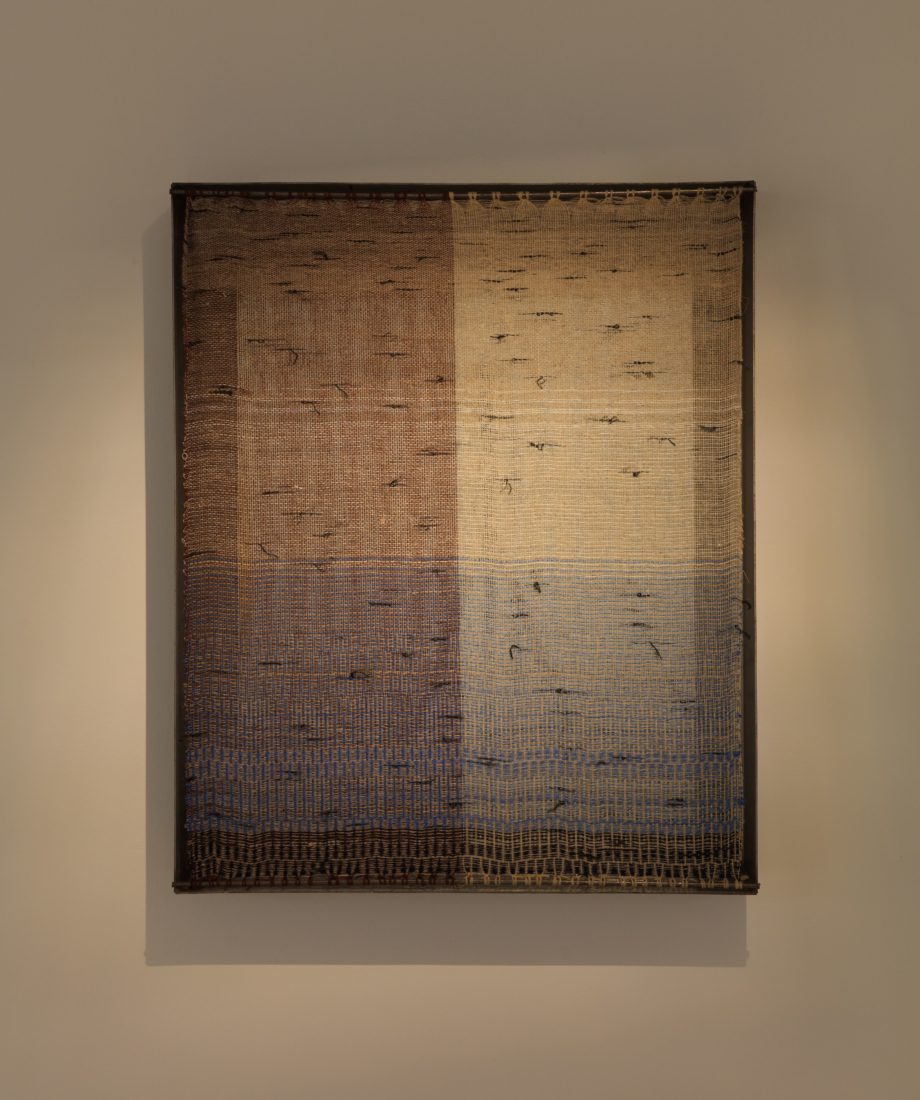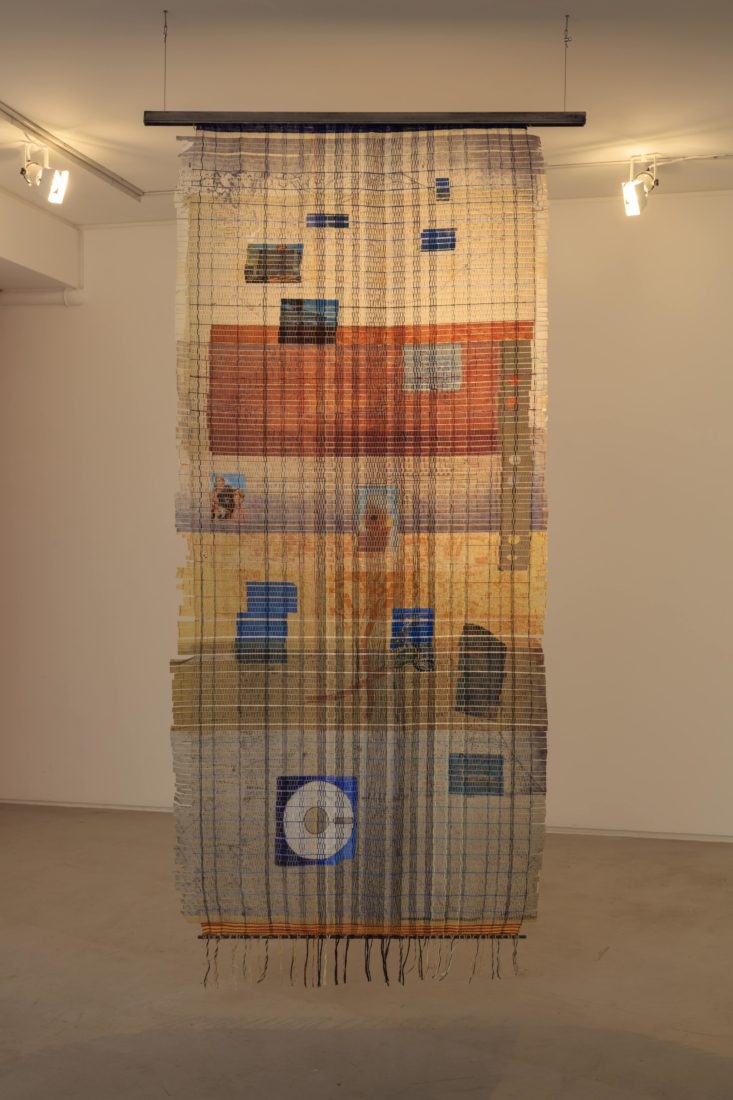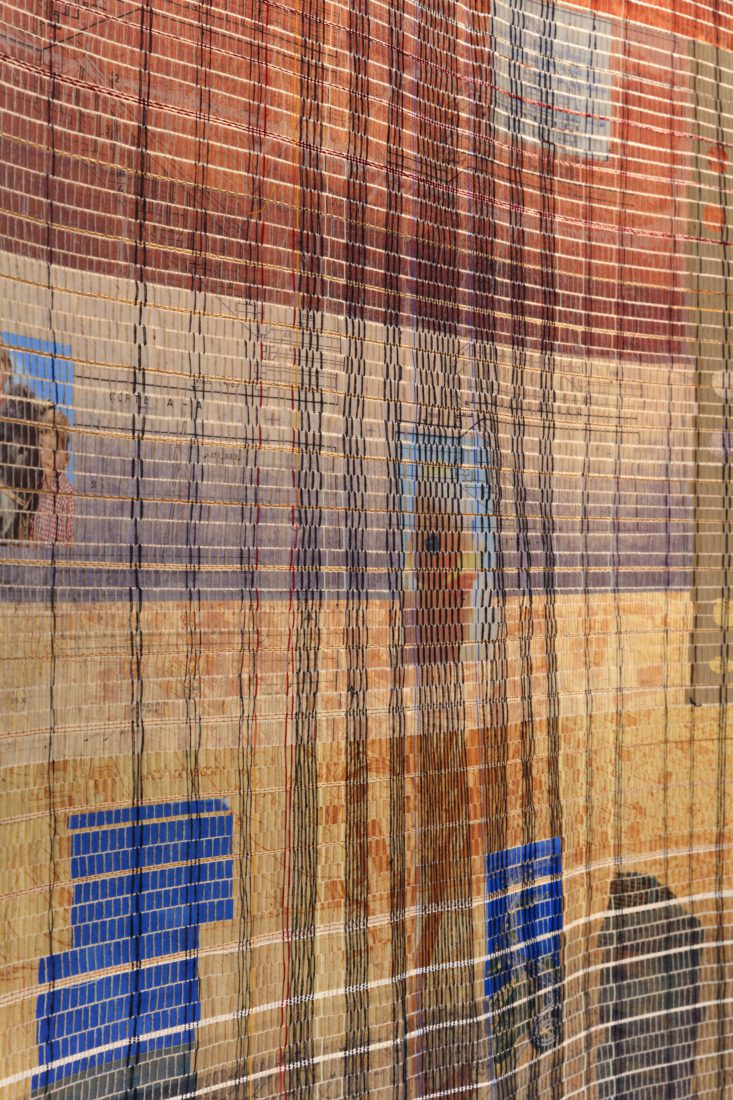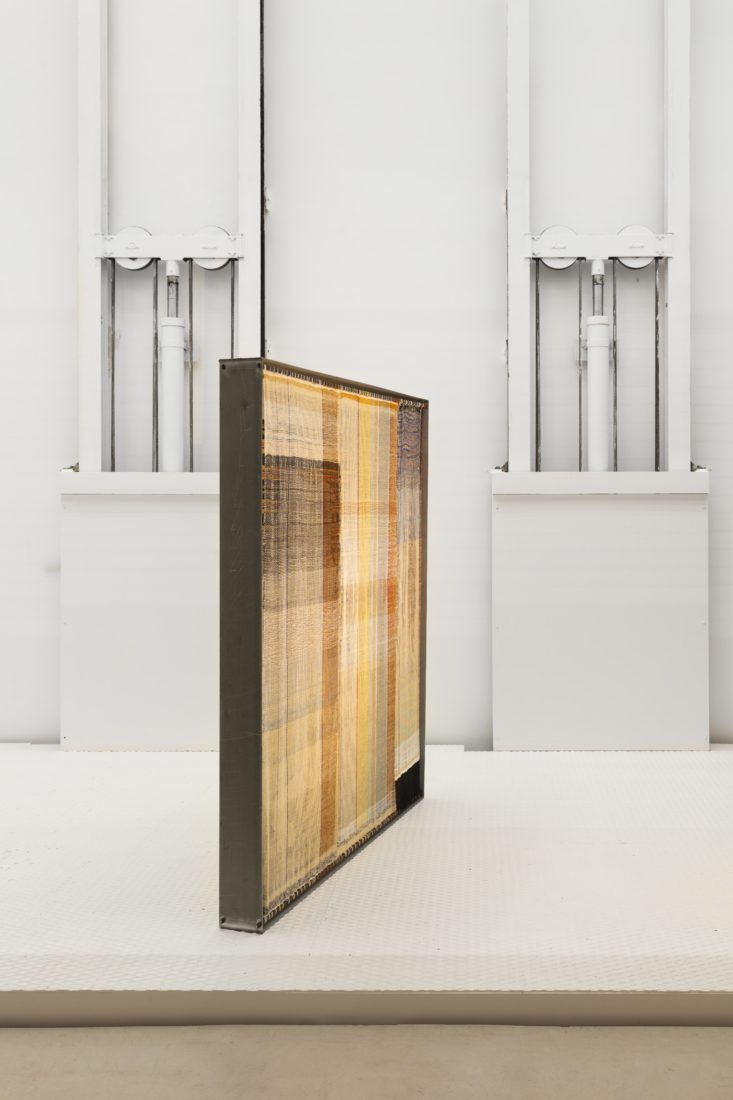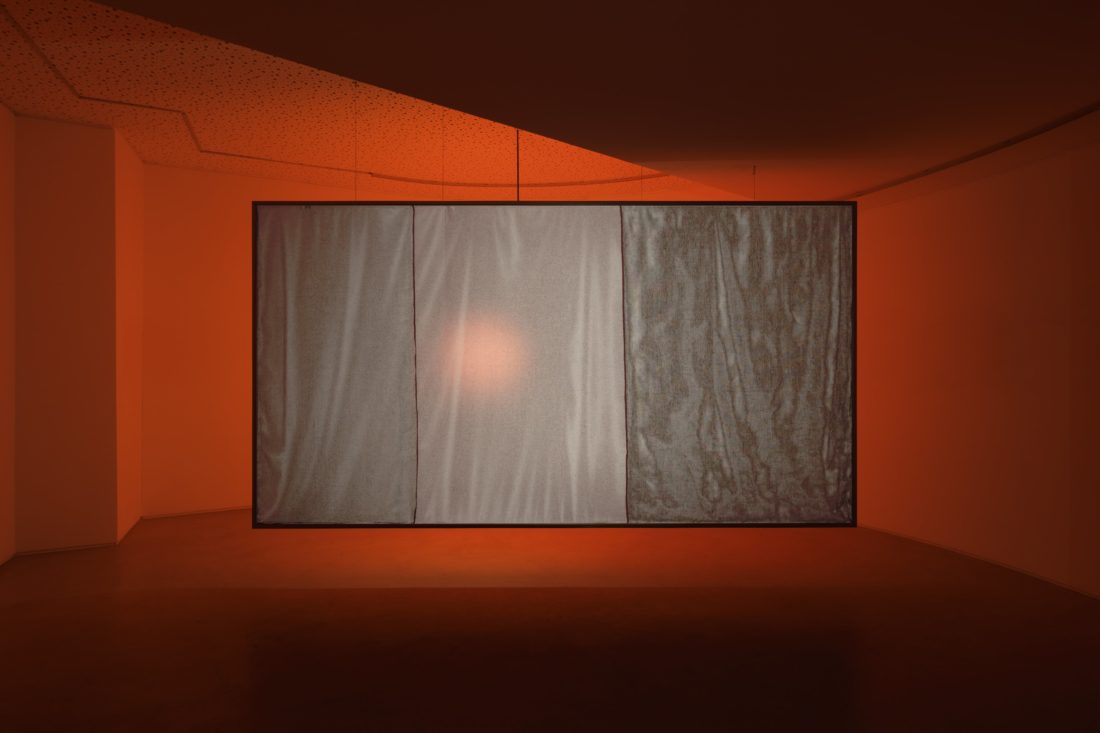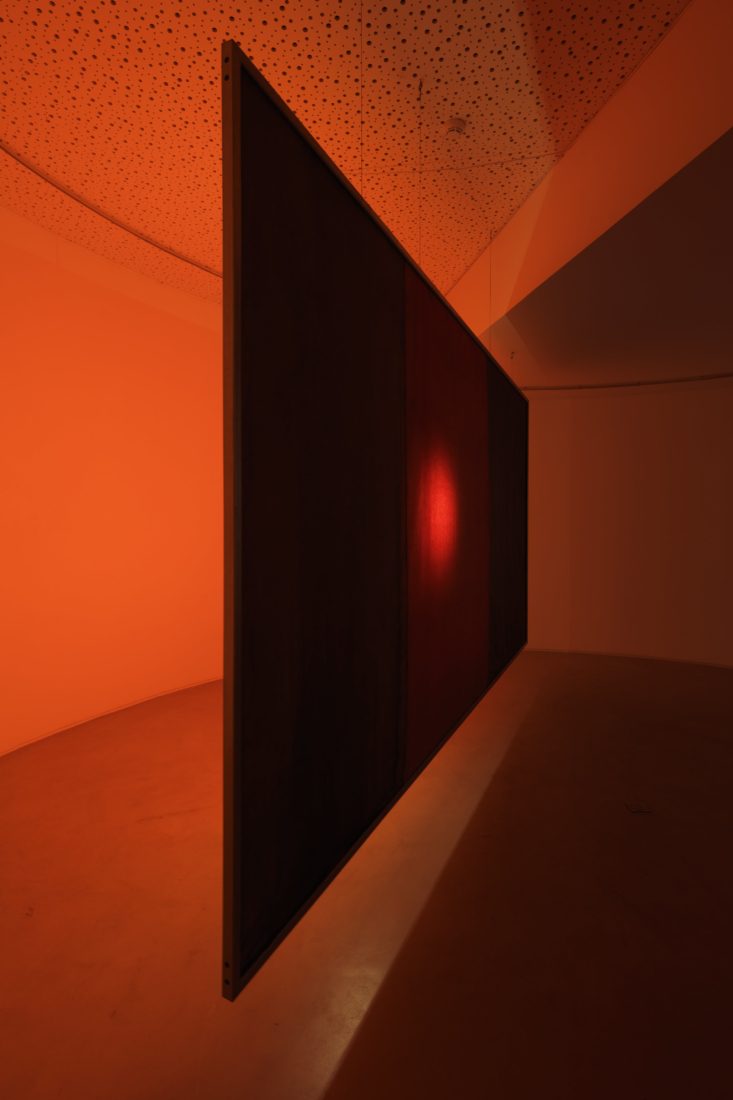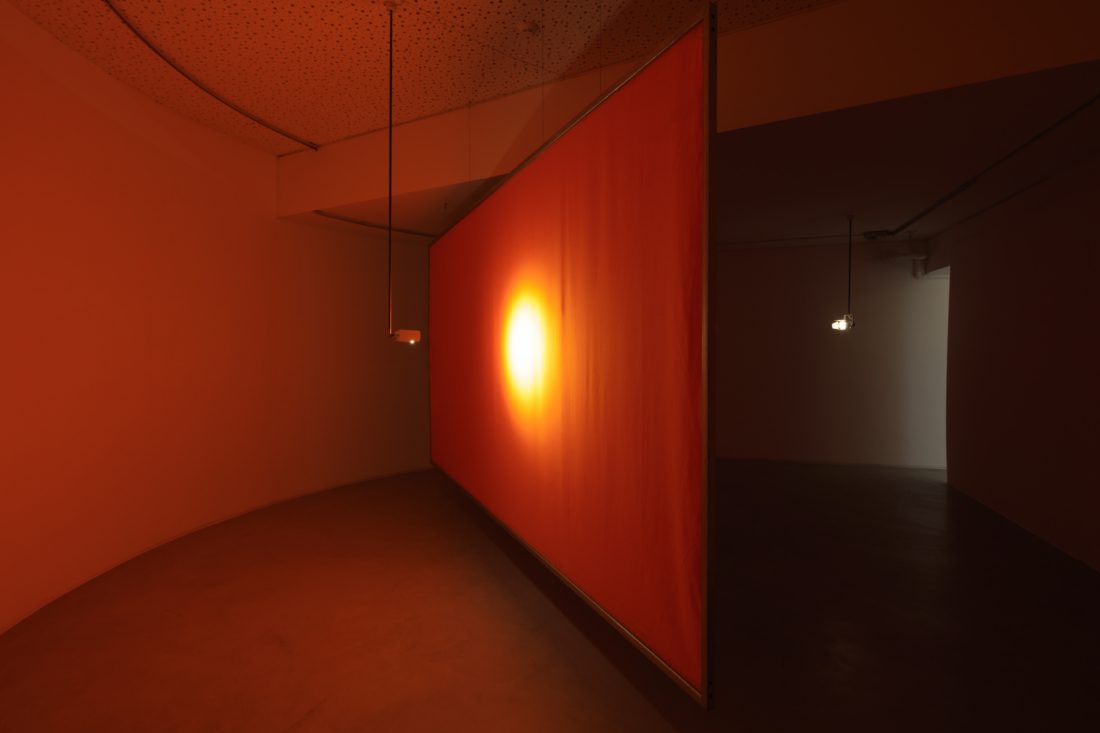What Holds The Structure
Maria Appleton
[22/05/25 - 25/07/25]
What Holds The Structure
What Holds The Structure is Maria Appleton’s second solo presentation at Galeria Foco. Through acts of weaving, un-doing, and re-use, the artist, materially and conceptually questions the notion that life is made-up-of and upheld by neatly intersecting threads. Rather, Appleton suggests that events follow an uninterrupted unfolding, made up of shifting perspectives, which incorporate knots and are shaped by loss, in the form of gaps, opacities or voids in the weave. The title of the exhibition at once asks and declares that there is a thing behind all things, including structure, which holds everything in a chaotic balance that is beyond our comprehension, yet within haptic reach.
Since the beginning, Appleton’s material research into textiles has focused on the tensions between the physical rigidity of the loom and its supple output. The artist has toyed with this contradiction by largely presenting her work within the fixed geometrical boundaries imposed by the machine, while employing other techniques and gestures, such as the removal of crossings, the incorporation of images, layering, and most recently knotted threads, into her various forms, to elaborate on and translate larger questions and patterns that arise when one is thinking through craft.
What Holds The Structure employs the architecture of the gallery space to elaborate on ideas of orientation, intuition and sedimentation—of bodily experiences, memories, artefacts—, approached through methods of construction through deconstruction and vice versa. Bathed in natural light, the ground floor presents three works that flatly surround the viewer left, right and centre. A closer encounter (orientation through movement) unfolds each piece, revealing varying levels of depth, colour and dimension, like palimpsests made over a short period of time. The central work, Senses of Existence, points towards all that which is external, like a building inviting discovery: a flat façade concealing it’s threedimensional, coded realities, woven or sourced by the artist into a caterpillar that mirrors the complexities of the material world and its digital extensions.
The staircase leads down into the cavernous basement of the gallery where Appleton has arranged a constellation of works which vary both in size and form of presentation. Dreamlike, each work could in fact be the fragment we are left with of a dream when we wake up. Like inner existence, dreams follow different spatiotemporal logics from “waking” life. They are the remains of survival, to borrow the words of the title of the free-standing section of, what the artist describes as, a discarded shop window displaying the sihlouettes of undergarments. The latter is in fact also a subtle, yet heavy, reminder that fabric is the most intimate of materials, a second skin.
Two works, Reconstruction of Loss and Dead Skin, are dotted in a seemingly uneven manner (remember: chance can be controlled once in the loom), with black-tinted knots. These are the linen threads that had formed parts of the weft upstairs, diligently removed and reconstructed into the spool that forms, respectively, the warp and weft and the weft, downstairs. Loss does not have to leave a void and Appleton approaches the problem via a textile re-enactment involving the deconstruction of one weave and its displacement onto two others. A dream is after all an atemporal, warped reconstruction and reaction to what the body receives in reality. The external sign of the knot thus becomes a ritualistic and mnemonic device of poetic control, offering an untethered reflection of who we are.
Memory, in a historical and collective sense, is selectively embedded in Blue Print, which extends and hangs like a vertical timeline of the not so distant past. The panel traps vintage post-cards of twentieth century architectures, symbols of idyllic childhoods, and an oversized image of a floppy disc, in its weave. The latter seems to suggest the more recent eruption of digital images, which reduce the above artefacts to a mere footnote.
By way of conclusion, the lower floor of the gallery conceals an almost crescent-shaped room which Appleton has reserved for Intuiton, a feeling that can sometimes be asymptomatic, unless acknowledged and embraced from the insideout. For the artist, this sense of sorts is the highest form of knowledge a person can develop. The work’s layered fabrics, understood as visceral, membrane-like barriers, conceal an internal lighthouse, located somewhere between the stomach and the throat.
Chiara Siravo

